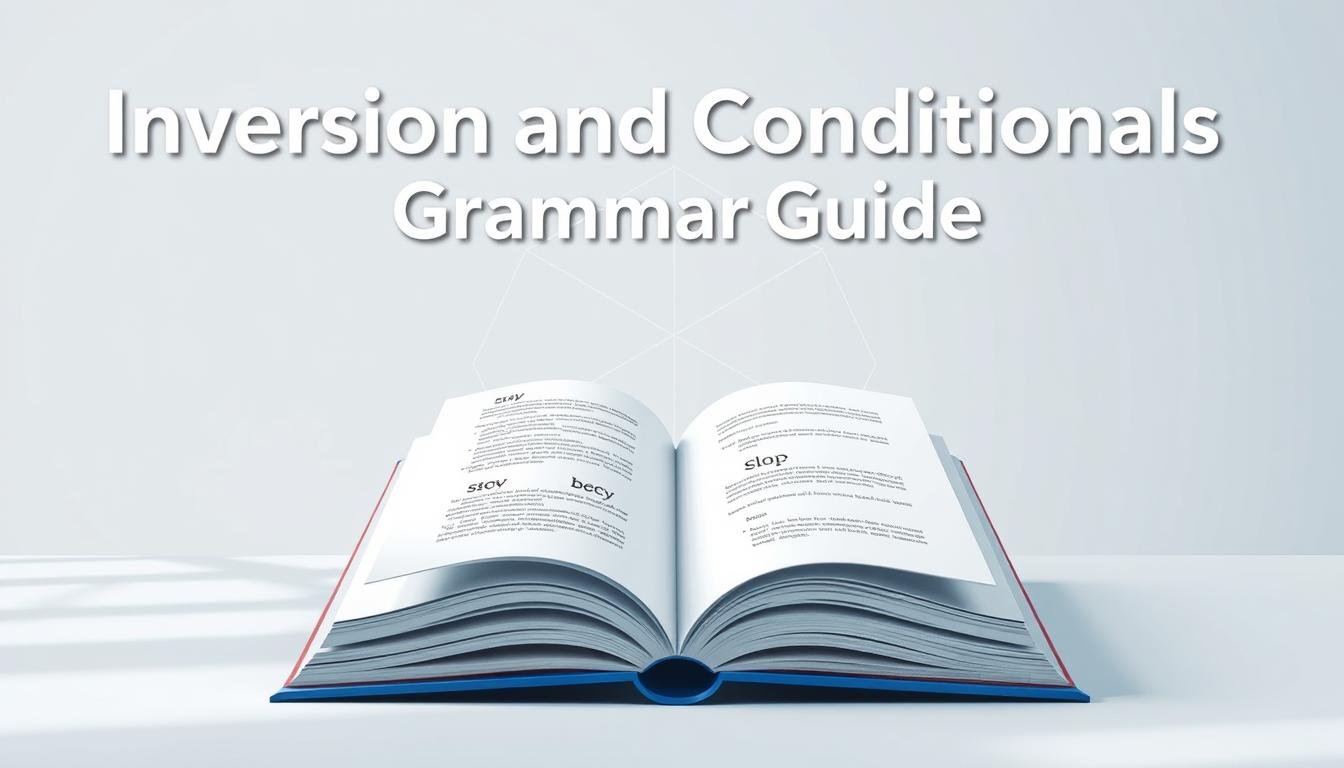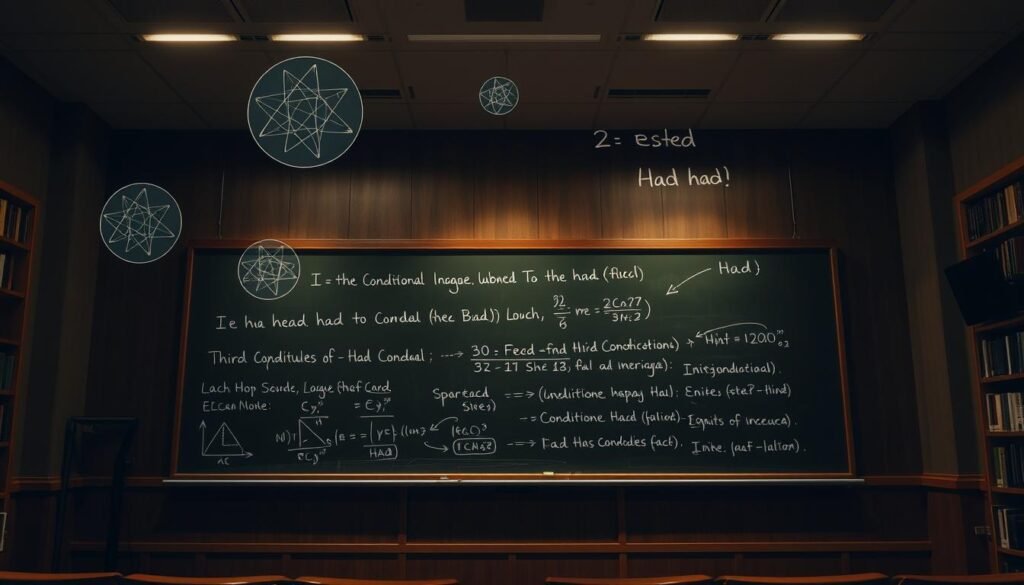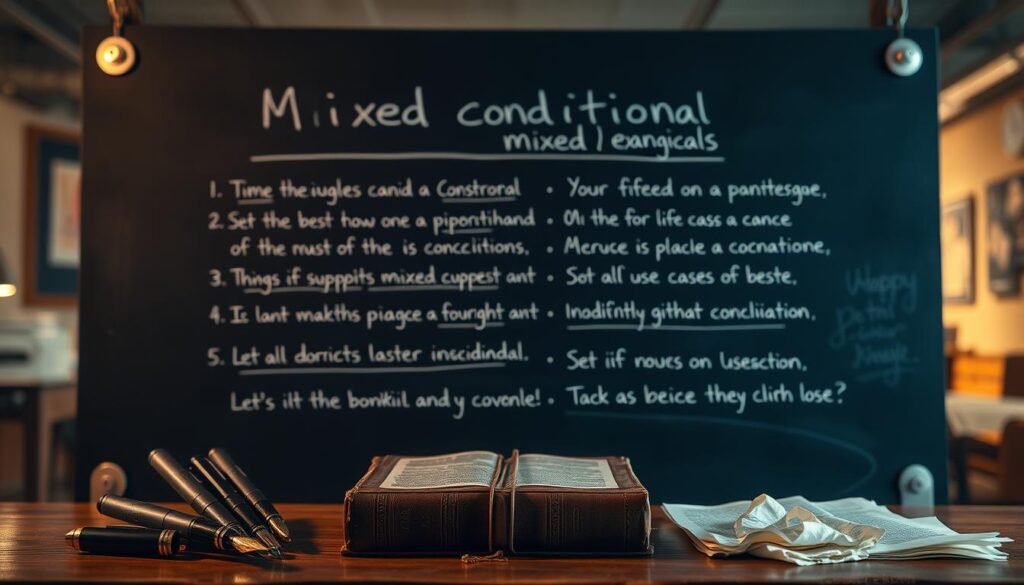Now Reading: Unlock the Secrets of Inversion and Conditionals in English
-
01
Unlock the Secrets of Inversion and Conditionals in English
Unlock the Secrets of Inversion and Conditionals in English

Unlock the Secrets of Inversion and Conditionals in English
Imagine writing a formal email or legal document. Would you say “Should you fail to submit the report, consequences follow” instead of “If you don’t submit the report, consequences follow”? This is inversion—a tool that makes conditional sentences sound more powerful. But how does swapping words like “should” and the subject make such a big difference?

Learning inversion and conditionals is not just for grammar fans. Professionals use these every day to sound confident in emails, reports, and talks. But many students miss out on inversion, sticking to simple “if-then” sentences. This article shows how inversion can make your words more impactful, change the meaning, and show you’re advanced.
Key Takeaways
- Inversion in conditionals replaces “if” with words like “should” or “were,” creating a formal tone.
- Changing the word order can make sentences like “Had she studied harder, she would have passed” more striking.
- Lawyers and academics use inversion to avoid repetition and add depth to their writing.
- There are three main types of conditionals (first, second, third) each with its own inversion patterns.
- Examples show how using inversion can make your writing clearer in school and work.
Understanding the Power of Inversion in English Grammar
Learning about inversion in English grammar can really improve how you communicate. This part explains its main ideas and how to use it in everyday writing.
What Is Grammatical Inversion?
Inversion in English grammar changes the usual order of words. It makes sentences more formal or emphasizes certain points. For example,
- “Never before had they encountered such a challenge” (past perfect inversion)
- “Under no circumstances will we accept delays” (present simple inversion)
Why Inversion Matters in Formal English
Inversion is key for professional writing. It makes texts sound more official. Legal documents, academic papers, and formal letters use it to avoid repetition. Take this example from a contract:
“Should the client fail to comply, the agreement terminates immediately.”
Here, inversion makes the sentence more formal. It replaces “If the client fails to comply,” without using “if.”
The Connection Between Inversion and Emphasis
Inversion draws attention to important parts of a sentence. Look at these examples:
Standard: “You must complete the report before Friday.”
Inverted: “Before Friday must you complete the report”
The inverted sentence puts more emphasis on the urgency. This shows why inversion is important for making a strong point.
The Relationship Between Word Order and Meaning
English sentences usually follow a Subject-Verb-Object structure. Changing this order can change the meaning and tone. Inversion rules break this pattern to show urgency, formality, or add a poetic touch. For example, “Here comes the bus” uses inverted word order to stress arrival, while “The bus comes here” states it simply.
| Standard Order | Inverted Word Order |
|---|---|
| She will call you tomorrow. | Tomorrow she will call you. |
| He often visits museums. | Often does he visit museums? |
- Inversion adds emphasis to time or place: “Then arrived the king”
- Formal writing often uses inversion in conditional clauses: “Were I you, I’d accept the offer”
- Questions sometimes invert naturally: “Rarely have I seen such clarity”
“Language is the dress of thought,” said Samuel Johnson. Inversion adjusts this “dress” to reveal deeper intent.
Learning about these changes helps learners deal with complex sentences. Inversion is not random; it’s a precise tool. Later, we’ll see how inversion rules apply to conditional structures, making hypothetical scenarios powerful.
Inversion and Conditionals: A Comprehensive Overview
Learning about inversion and conditionals helps you understand how they change the meaning and tone of sentences. Traditional conditional sentences follow a set pattern. But, inversion brings a new layer of meaning. Let’s see how they work together.
Traditional Conditional Structures
Standard conditionals use “if” and stick to a subject-verb order:
- Zero conditional: “If water reaches 100°C, it boils.”
- First conditional: “If you study hard, you pass exams.”
- Second conditional: “If she were president, she’d reform policies.”
- Third conditional: “If he hadn’t missed the train, he’d be here now.”
How Inversion Transforms Conditional Sentences
Inversion changes the order by removing “if” and swapping the verb and subject. Look at this:
Traditional: “If you finish work early, you can leave.”
Inverted: “Finish work early, and you can leave.” (This version puts more emphasis on the action)
Formal inversion drops “if” for a more polished look: “Were he to win, the outcome changes.” (This is used for a formal tone)
When to Use Inverted Conditionals
“In legal contracts, inverted conditionals clarify obligations without ambiguity.”
Use inverted forms in formal writing, academic papers, or when talking about hypothetical situations. They make your arguments stronger and your writing more refined. But, don’t use them in everyday talk unless you’re going for a specific style.
First Conditional Inversion: Using “Should”
Learning the first conditional inversion with “should” helps you understand inversion rules better. It makes your sentences clear and professional. This is because “should” replaces “if” to make sentences more concise.
The Formula: Should + Subject + Base Verb
To invert conditionals, swap “if” with “should”. The formula is simple:
- Should + subject (without “if”)
- Base verb (present tense)
- Main clause (instruction or result)
For example: “Should you finish early, submit your work.” Here, “should” emphasizes the urgency of the condition.
Common Contexts for First Conditional Inversion
Use this structure in:
- Official policies: “Should an emergency arise, follow protocol A.”
- Business emails: “Should deadlines change, notify the team.”
- Legal agreements: “Should either party withdraw, penalties apply.”
Practice Examples for Mastery
Compare standard and inverted forms:
- Standard: If the client approves, we proceed. → Inverted: Should the client approve, we proceed.
- Standard: If you miss the deadline, penalties apply. → Inverted: Should you miss the deadline, penalties apply.
Practice rewriting sentences to use first conditional inversion naturally. Keep your sentences clear and formal.
Mastering Second Conditional Inversion with “Were”
The second conditional shines with inversion. Swap “if” for “were” to create hypotheticals, such as: Were I rich, I would travel the world. This method uses “Were + subject + base verb” to talk about unlikely or imaginary situations.
| Standard Form | Inverted Form |
|---|---|
| If she were to win, she would donate the prize | Were she to win, she would donate the prize |
| If he were here, we could discuss it | Were he here, we could discuss it |
- Use in formal writing to add sophistication
- Highlights hypothetical situations with “were”
- Suitable for academic essays or professional letters
Were I you, I’d practice inverted structures daily.
Look at the difference between inverted and standard conditional sentences. Inverted forms often suggest a lower chance. For example: “If they were president” versus “Were they president”—the latter seems more uncertain. To master it, you need to notice the tone change. Try rewriting sentences like “If we were to meet tomorrow” as “Were we to meet tomorrow.”
Third Conditional Inversion: The “Had” Pattern
Third conditional inversion with “had” changes sentences to look at past possibilities. This method, part of inversion and conditionals, turns regret or what-ifs into clear statements. It flips the subject and “had” to show hypothetical past actions.

The Formula: Had + Subject + Past Participle
To make inverted third conditionals, follow these steps:
- Start with “Had” and the subject (e.g., Had they).
- Add the past participle of the main verb (e.g., known, arrived).
- Finish with the result clause (e.g., we would have succeeded).
For example, Had I studied harder is a better way to say “If I had studied harder.”
Expressing Regret and Hypothetical Past Situations
Regret is clear in inverted forms like: Had we acted sooner, the project might have succeeded. These forms highlight missed chances in work or life.
Transforming Traditional Third Conditionals
Here’s a comparison of standard and inverted forms:
| Traditional Third Conditional | Inverted Form |
|---|---|
| If they had submitted the report on time, the client would have approved it. | Had they submitted the report on time, the client would have approved it. |
| If we had hired more staff, deadlines would have been met. | Had we hired more staff, deadlines would have been met. |
Practice changing sentences to get better at this. Inversion and conditionals here make formal, clear expressions of past “what-ifs.”
Practical Applications in Academic and Professional Writing
In academic and professional writing, inverted word order and inversion in English grammar make things clearer and more formal. Legal contracts, research papers, and business reports often use inverted structures. This is to highlight conditions or hypotheticals.
For example, a contract might say, “Should the client delay payment, a 10% fee applies.” This avoids passive voice and sounds authoritative.
- Legal documents: “Had the agreement been breached, penalties would follow.”
- Academic essays: “Were climate change unchecked, ecosystems would collapse.”
- Business proposals: “Should costs exceed projections, stakeholders must be notified immediately.”
“Inversion adds precision without ambiguity,” notes the APA Style Guide, recommending its use in conditional clauses requiring emphasis. Technical manuals often adopt inverted structures to streamline instructions: “Had the system failed, reboot the server.”
Using inversion too much can sound fake. So, it’s important to find a balance. In research papers, mix standard and inverted forms to avoid boredom. For example: “If funding is secured, the project proceeds” versus “Were funding secured, the project would proceed.”
Professionals in law, science, and business should know how to use these structures well. Harvard Law Review articles often use inversion to make legal points clear. Corporate emails might say “Should this plan proceed,” to show confidence.
Getting good at inversion in English grammar makes your writing sound professional. Try to spot conditional clauses in reports or proposals. Then, change their structure to make your sentences stronger. Inversion can turn simple sentences into clear, authoritative ones.
Advancing Your English: Beyond Basic Inverted Conditionals
Getting better at English means learning about complex conditionals. Mixed conditionals and zero conditionals help us express more. They mix up time frames and share universal truths. For example, “Had she practiced daily, her skills would now shine.” This shows how to mix past and present.

Zero conditionals show things that are always true: “Were water heated to 100°C, it boils.” They change how we see cause and effect but keep the facts the same. Writers and speakers use them to make their points stronger. A political speech might say: “Should policies fail, communities suffer.” This makes the message more powerful.
- Practice mixed conditionals by changing the order of clauses: “Had they arrived earlier (past perfect), we’d still be celebrating now (present).
- Find zero conditionals in science texts: “Were metals cooled, they contract.”
- Listen to TED Talks or podcasts to hear how people use inversion in real life.
Getting good at English means knowing how to use inversion. It adds depth and emphasis to what we say. Reading a lot helps us learn these patterns. It’s all about knowing the rules and when to break them.
Conclusion: Integrating Inversion and Conditionals into Your English Repertoire
Learning inversion rules and their use in conditionals makes your communication clearer. Key patterns like should, were, and had are used for formal speech. They help learners show emphasis or formality, making their writing and speaking more advanced.
It’s important to practice inversion and conditionals a lot. Doing exercises like rewriting sentences or studying legal texts shows how they work in real life. People in law or academia use these rules to make their arguments stronger. The more you practice, the better you’ll get at using them.
Using inversion and conditionals in everyday talk makes you sound more professional. For example, using them in emails or reports makes your communication more effective. With regular practice, these structures become second nature, making your speech clearer and more persuasive. Focusing on these patterns helps you speak fluently, which is important in both your personal and professional life.
FAQ
Q: What is inversion in English grammar?
A: In English grammar, inversion means changing the usual order of a sentence. It’s used to add emphasis or to make sentences more formal. Instead of saying “if,” we use an inverted structure.
Q: How does inversion impact conditional sentences?
A: Inversion changes how we write conditional sentences. It removes “if” and swaps the subject and verb. This makes sentences sound more formal and serious, great for school, law, and books.
Q: Can you provide examples of common conditional forms?
A: There are several types of conditional sentences: – Zero conditional: For general truths (e.g., “If you heat ice, it melts.” → “Were you to heat ice, it melts.”). – First conditional: For future plans (e.g., “If it rains, we’ll cancel the picnic.” → “Should it rain, we’ll cancel the picnic.”). – Second conditional: For “what if” situations (e.g., “If I were rich, I would travel the world.” → “Were I rich, I would travel the world.”). – Third conditional: For past “what if” situations (e.g., “If I had known, I would have helped.” → “Had I known, I would have helped.”).
Q: What are mixed conditionals?
A: Mixed conditionals mix different times in one sentence. For example, “If I had studied medicine, I would be a doctor now.” Inverted, it becomes “Had I studied medicine then, I would be a doctor now.”
Q: Why is inversion advantageous in professional writing?
A: Inversion makes professional writing sound more formal and polished. It strengthens arguments and makes them clearer. It’s especially useful in school and legal papers.
Q: When should inverted conditionals be used?
A: Use inverted conditionals in formal writing like school papers, legal documents, and business letters. They add a touch of elegance and importance to your writing.
Q: How can one practice using inversion in conditionals?
A: To practice, change regular conditionals into inverted ones. Try mixing both types in sentences. Reading and writing exercises can also help you get better at using inversion.
Q: What should I keep in mind while using inversion?
A: When using inversion, mix it with regular sentences to keep your writing natural. Too much inversion can make your writing seem too formal. Use it to add style, not just to follow rules.






























